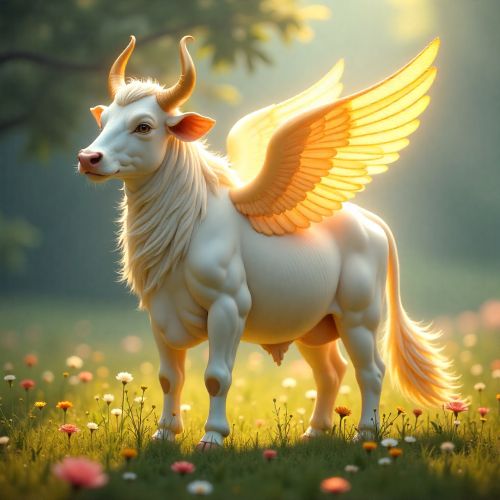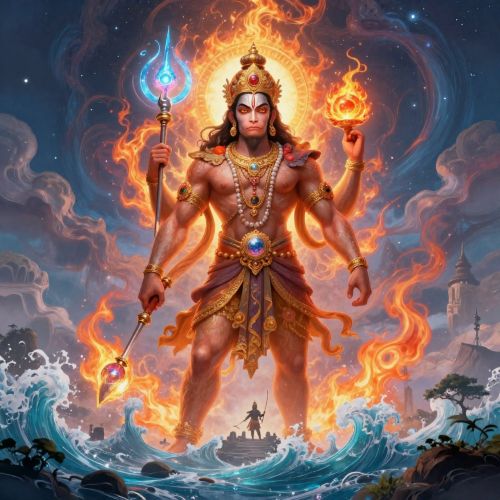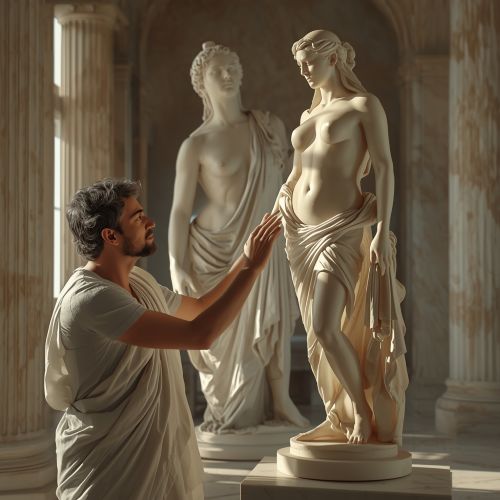Quetzalcoatl’s Gift of Maize : The Aztec Story of Divine Nourishment
Listen
At a glance
| Description | |
|---|---|
| Mythology | Aztec Mythology |
| Bestowed Upon | Humanity |
| Granted By | Quetzalcoatl |
| Primary Effect | Sustenance through maize, foundation of civilization |
| Conditions Attached | Reverence and ritual offerings to god |
Gift of Maize
Introduction
The Gift of Maize stands as one of the most important stories in Aztec mythology, explaining how humanity came to receive the crop that sustained their culture, economy, and spirituality. At the heart of this myth lies Quetzalcoatl, the Feathered Serpent deity whose compassion and ingenuity allowed humans access to maize hidden deep within a sacred mountain. This divine act transformed the course of Aztec history, turning scattered communities into thriving agricultural societies. The narrative is more than a tale about food—it is a testament to divine generosity, the origins of civilization, and the sacred relationship between the gods, the land, and the people who depended on it.
Mythological Background
In the Aztec worldview, Quetzalcoatl held an esteemed position as the god of wind, learning, priesthood, and creation. He was often portrayed as a guardian of humanity, guiding them with wisdom rather than force. According to traditional accounts recorded by chroniclers after the Spanish conquest, maize was originally sealed within Tonacatepetl, the Mountain of Sustenance. Humans survived on meagre roots and edible plants, unable to access the divine crop that the gods themselves consumed.
Several gods attempted to retrieve the grain, but the mountain resisted their efforts. It was Quetzalcoatl who recognized that brute strength would not succeed. Instead, he sought a subtler approach to deliver the Gift of Maize that would unlock humanity’s potential and mark a new era in their history.
Granting of the Boon/Blessing
Quetzalcoatl’s solution was rooted in humility and cleverness. Transforming himself into a small black ant, he joined a red ant guide and entered the mountain’s narrow crevices. The journey tested his endurance, but he persisted until he reached the chamber where the kernels of maize were hidden. Carrying a single grain in his tiny jaws, he emerged from Tonacatepetl and presented it to humanity.
This act of retrieving maize was interpreted by the Aztecs as a powerful sign: even gods must sometimes relinquish grandeur and adopt simple forms to achieve great things. Through this small grain, Quetzalcoatl offered not only food but a blessing that would change the fate of an entire civilization.
Nature of the Boon/Blessing
The Gift of Maize was more than an agricultural benefit—it represented the foundation of Aztec society. Once planted, maize flourished under divine guidance and became the heart of the Aztec diet, appearing in the form of tortillas, tamales, gruels, beverages, and ceremonial foods. Its nutritional richness made it indispensable in sustaining large populations and supporting physically demanding labour.
In Aztec cosmology, maize was regarded as sacred flesh. The deity Centeōtl, the god of maize, embodied the spiritual essence of the crop, and rituals honoured him to ensure fertile harvests. This spiritual significance made maize not only a dietary staple but a divine element intertwined with human identity and cosmic order.
Recipients and Key Figures
The central figure of the myth is Quetzalcoatl, whose compassion and creative strategy ensured that humans could thrive. Centeōtl, often depicted as a youthful figure emerging from a maize stalk, governed agricultural fertility and embodied the crop’s sacred nature. The human recipients—particularly the Aztec people—were viewed as beneficiaries of divine generosity, entrusted with the responsibility to cultivate and honour maize through ceremony, stewardship, and thanksgiving. The myth also acknowledges the presence of other gods who attempted but failed to retrieve maize, highlighting Quetzalcoatl’s unique role as a culture-hero driven by empathy rather than dominance.
Effects and Consequences
The arrival of maize revolutionized Aztec life. Stable agriculture allowed small communities to evolve into organized societies, leading to the rise of complex city-states such as Tenochtitlan. With reliable food production, social stratification developed, labour specialization emerged, and religious institutions strengthened.
Maize cultivation required a precise understanding of natural cycles, inspiring advancements in astronomy, irrigation, and ceremonial calendars. Its presence shaped the economy, influenced trade, and formed the backbone of daily meals and ritual offerings. The Gift of Maize also reinforced the idea that sustenance was a sacred trust between humans and the divine, giving purpose to rituals of renewal, thanksgiving, and cosmic balance.
Symbolism and Spiritual Meaning
The Gift of Maize carries deep symbolic resonance. Maize represents life, fertility, and the earth’s bounty, linking physical nourishment with spiritual prosperity. Quetzalcoatl’s transformation into an ant symbolizes humility, perseverance, and the belief that even the smallest beings can perform extraordinary deeds.
Tonacatepetl, the mountain that guarded maize, embodies obstacles that require wisdom rather than force to overcome. The grain itself symbolized divine flesh, reflecting the belief that human life depended on gifts bestowed by the gods. The seasonal cycle of maize—from seed to harvest—mirrored Aztec ideals of death, rebirth, and the interconnectedness of all existence.
Cultural Impact and Legacy
The legacy of the Gift of Maize continues to thrive across Mexico and Mesoamerica. Maize remains a central component of cuisine, culture, and identity, reflected in the phrase “Somos de maíz”—We are made of maize. Festivals such as Día de Centeōtl celebrate the spiritual importance of the crop through dances, offerings, and communal feasts.
Archaeological sites depict scenes of maize rituals, and modern celebrations preserve ancient agricultural knowledge, linking contemporary life to ancestral tradition. The story of Quetzalcoatl’s gift endures as a reminder of humanity’s connection to nature, divine kindness, and the sacred roots of civilization.
Source
Andrews, J. R. (2004). The Hero with a Thousand Faces. Princeton University Press.
Britannica. (1998). Quetzalcoatl | Definition, Myth, & Meaning. https://www.britannica.com/topic/Quetzalcoatl
Enchanted Chronicles. (2025, March 16). The Legend of Centeotl and the Divine Gift of Maize. https://enchanted-chronicles.com/legend-of-centeotl-maize-quetzalcoatl/
StudyCorgi. (2025, June 6). Quetzalcoatl: Symbolism in Mesoamerican Cultures and Its Impact on the Spanish Conquest of Mexico. https://studycorgi.com/quetzalcoatl-symbolism-in-mesoamerican-cultures-and-its-impact-on-the-spanish-conquest-of-mexico/
La Toxica. (2025, April 5). Maize Legend Illuminates Mexican Culture. https://latoxica.ca/en/blogue/maize-legend-illuminates-mexican-culture/
EBSCO Research Starters. (2018, December 31). Quetzalcóatl (mythology) | Research Starters. https://www.ebsco.com/research-starters/literature-and-writing/quetzalcoatl-mythology
Frequently Asked Questions
What is the Gift of Maize in Aztec mythology?
It is the story of how Quetzalcoatl retrieved maize from the Mountain of Sustenance and gave it to humans, allowing Aztec society to flourish.
Why did Quetzalcoatl bring maize to humans?
Quetzalcoatl acted out of compassion, wanting humanity to have proper nourishment and the ability to develop a stable civilization.
How did Quetzalcoatl obtain the maize?
He transformed into a small black ant to enter the mountain where maize was hidden and carried out a single kernel for humans to cultivate.
What does maize symbolize in Aztec culture?
Maize represented life, fertility, divine blessing, and humanity’s sacred relationship with the gods and the earth.
How is the Gift of Maize celebrated today?
Modern festivals like Día de Centeōtl, traditional farming practices, and cultural expressions continue to honour maize as a sacred legacy.








